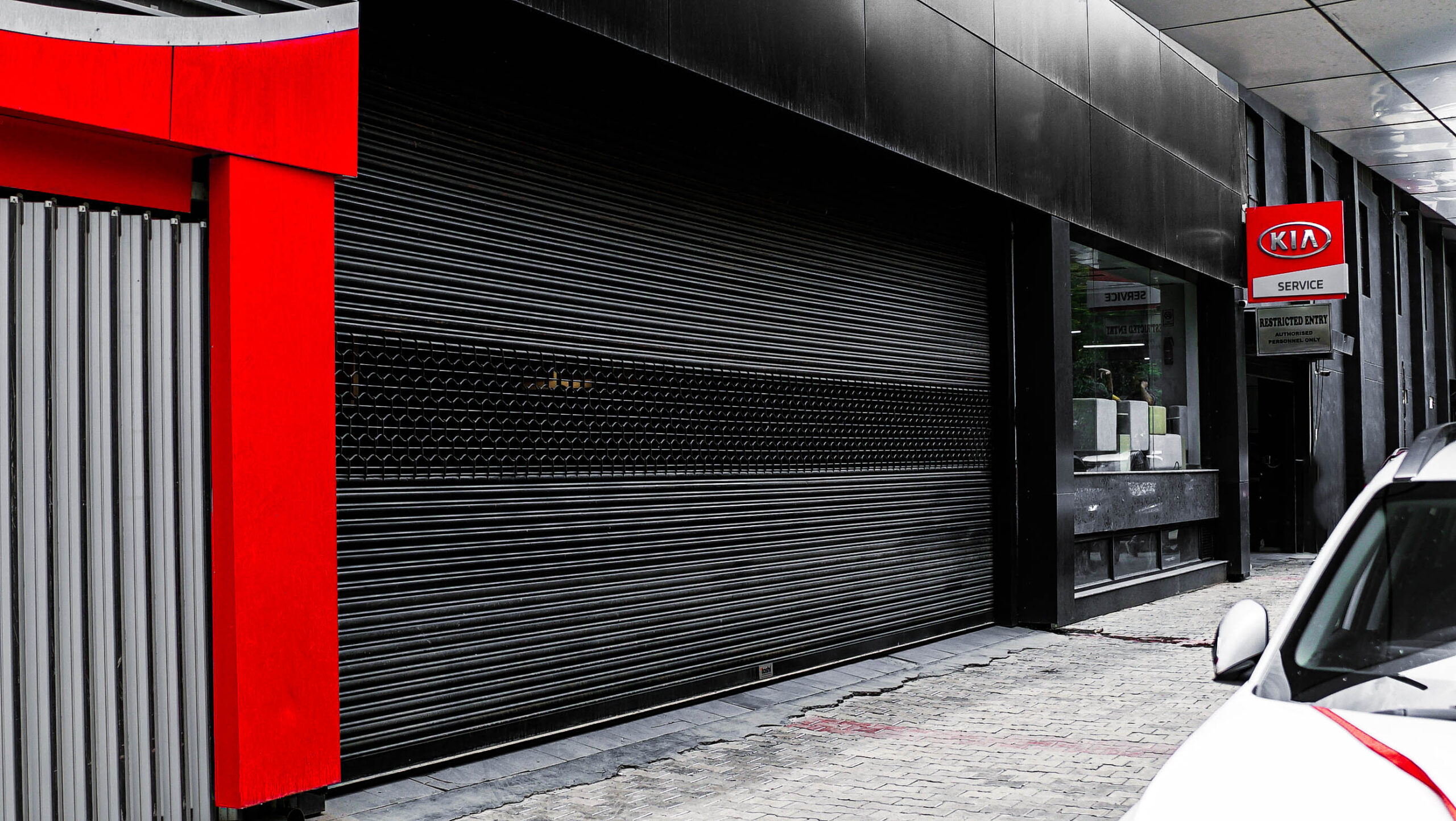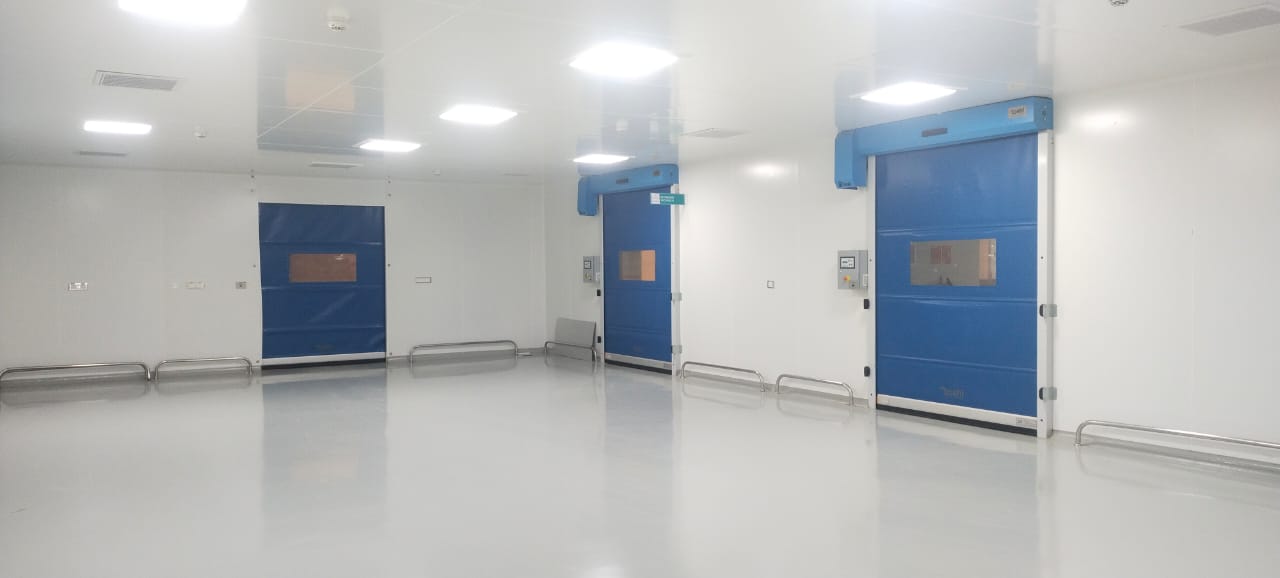Rolling shutters are metal doors that roll up and down. You’ve seen them on shops, homes, and garages. They’re like strong window blinds that protect from rain, noise, and unwanted visitors.
There are two main types:
- Traditional rolling shutters – operated manually by hand.
- Motorized rolling shutters – operated by a motor with a switch or remote.
In this article, we’ll compare both kinds, break down their pros and cons, and help you decide which one suits your needs best.
What Are Traditional Rolling Shutters?
Traditional rolling shutters work with manual effort. You pull them up to open or down to close.
How they work:
- A metal curtain rolls around a drum at the top.
- A spring or chain system helps lift or lower it.
- A latch or lock holds it in place when shut.
Pros:
- Simple design – fewer moving parts.
- No electricity needed – works even during blackouts.
- Budget-friendly – lower upfront and repair costs.
- Easy to fix – basic parts and repairs.
Cons:
- Physical effort required – can be tiring.
- Takes time – not quick to open or close.
- Safety risks – chance of finger pinches or muscle strain.
- Hard to use in tall places – reaching can be tricky.
What Are Motorized Rolling Shutters?
Motorized shutters use a motor to roll up and down. They work with a switch, remote, or even your smartphone.
How they work:
- A motor sits inside the drum or housing.
- It connects to power (110–230 V).
- You control it via switch, remote, or app.
- Often includes safety features like auto-stop or obstacle detection.
Pros:
- Super easy to use – just press a button.
- Quick operation – opens in seconds.
- Improved security – can include auto-locks or alarms.
- Smart home ready – works with apps or voice control.
- Great for all ages – no lifting required.
Cons:
- Higher cost – installation and parts are pricier.
- Needs electricity – may stop working during outages (unless there’s a backup).
- More technical repairs – professional help may be needed.
- Some upkeep – motors need occasional checks.
Side-by-Side Comparison
| Feature | Traditional Shutters | Motorized Shutters |
| Operation | Manual pull | Automatic via remote/switch |
| Installation cost | Low to moderate | Moderate to high |
| Power source | None | Electricity (backup optional) |
| Convenience | Requires physical effort | Push-button simplicity |
| Speed | Slow | Fast |
| Accessibility | Hard for some users | Easy for all |
| Security | Manual locking | Often includes auto-lock/alarm |
| Maintenance | Basic upkeep | Needs occasional motor service |
| Dependence on electricity | No | Yes (or battery backup) |
Who Should Choose Which?
- Traditional Shutters are best for:
- Budget-conscious users.
- Areas with limited electricity.
- DIY fans comfortable with manual control.
- Smaller or reachable shutter setups.
- Budget-conscious users.
- Motorized Shutters are ideal for:
- Families or businesses needing speed.
- Elderly or people with limited mobility.
- Larger, harder-to-reach shutters.
- Homes with smart technology systems.
- Families or businesses needing speed.
Real-World Scenarios
1. Your Corner Store
You raise and lower shutters multiple times a day. Manual shutters slow you down. Motorized shutters save you time with one click.
2. A Family Home
Closing every window shutter by hand at night is a chore. Motorized shutters let you close all with one button.
3. Remote Garage
If your garage is far from your main house, manual control can be a hassle. A motorized option saves effort, especially during bad weather.
Think Smart: Power Outage Tips
In areas with frequent outages, here’s how to keep motorized shutters working:
- Backup battery – lets shutters run during a power cut.
- Manual override – some models allow hand-cranking.
- Hybrid shutters – blend manual and motorized use.
Maintenance Tips
Traditional shutters:
- Clean with soapy water.
- Check springs and rollers yearly.
- Use lubricant for smooth movement.
Motorized shutters:
- Inspect wires and motors annually.
- Clean sensors regularly.
- Test manual override.
- Check backup battery if present.
Cost Snapshot
While prices vary, here’s a general idea:
- Manual shutters: lower initial cost, plus small repairs.
- Motorized shutters: higher setup cost, plus maintenance and optional battery.
Conclusion
Both rolling shutters boost privacy, safety, and weather protection. But which one fits best?
- Go traditional if you want affordable, simple, and dependable.
- Go motorized if you want speed, convenience, and modern control.
Ask yourself: How often will I use them? Who’s operating them? Is power reliable in my area?
Choose the shutter that fits your space, needs, and lifestyle.



